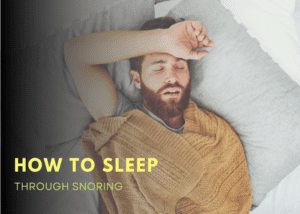Is sleeping on your back a good idea? Have you heard it can be a contributing factor to sleep apnea?
Getting a good rest while sleeping on your back can be a challenge. Try using a memory foam pillow that contours to the curve of your neck. Sleep with a pillow under your knees to relieve hip pain and pull tendons from this new sleeping position.
Why is sleeping on your back so difficult?
Not everyone finds sleeping on their back so difficult, but how to sleep comfortably on your back can be a major challenge.
However, sleeping on your back doesn’t mean you have to be uncomfortable. No matter what the do’s and don’ts are for sleeping on your back, you should always use a pillow that conforms to your cervical spine.
Also, placing a pillow on your knees can help remove the tension from your lower back and help prevent tight tendons from becoming sore during your sleep.
Learning how to sleep straight like a regimental soldier can be painful until you master the techniques of being comfortable. Instead of sleeping straight, why not mimic a star jump without the action. Sleeping with your legs apart and your arms stretched out may be difficult if you share your bed.
Is sleeping on your back bad for you?
Sleeping on your back is claimed to relieve stress headaches after an arduous day at work. On the contrary, it is said to be beneficial in many ways. Lying on your back releases the pressure from joints like your jaw and lower neck, allowing blood to circulate freely, elevating a tension headache.
If you have sinus issues sleeping on your back helps the sinus cavities to drain naturally, reducing that bunged-up feeling during the night.
Make sleeping on your back part of your beauty regime. Sleeping on your back reduces wrinkles. This sleeping position allows gravity to take effect and smooth your skin.
If sleeping on your back is difficult for you with so many folks, then there is no reason why you should sleep elevated.
Learning how to sleep elevated on your back is a little easier and is an excellent position if you have a cold and an essential position if you suffer from GERD or acid reflux.
How to sleep elevated on your back is as simple as using more than one pillow. However, the second or even third pillow is the best-placed lengthways to support your torso and remove any undue pressure from your spine.
This method of sleeping is surprisingly relaxing and will help when learning how to sleep on your back.
How to sleep with a pillow under your back?
Once you have committed to the idea of sleeping on your back, you may find some uncomfortable pressure spots like your lumbar support.
If you sleep in an elevated position using the pillow’s length for support, you reduce the possibility of sleep apnea.
If you have a respiratory disease or infection, sleeping with pillows under your back is necessary to reduce congestion in your nose and throat.
Sleeping elevated reduces dark circles under the eyes and eye bags? Being elevated allows these fluids to drain naturally without cold compresses and other makeup.
If you experience pain in your lumbar region, it’s perfect to use a soft pillow to add extra support.
It is recommended to use a pillow under your knees to reduce lower back and pelvis pressure. It helps to keep your spine in alignment.
You may find yourself reverting to side sleeping. If this happens, just turn again and settle into a restful night’s sleep on your back.
Back Pain while sleeping on your back

Caucasian ethnicity female suffering from back pain because of uncomfortable mattress
You can alleviate the dull ache you sometimes experience after an hour of lying on your back.
Before you jump into bed, it pays to have a nice relaxing warm bath to soak away the aches and pains of the day. However, a few gentle stretches will release the tension from your hip flexors and should stop any further pain.
The use of additional pillows is permissible in the search for comfort. A preferred way to use additional pillows is to place the pillows under the arms.
This will reduce any pain in tight muscles.
Lying in a supine position can be detrimental to your health, placing your neck under undue stress and increasing lower back pain. Pillows are essential for achieving a good night’s sleep when sleeping on your back.
How can I train myself to sleep on my back?
Persistence is key when it comes to sleeping on your back. It is easy to roll over and resume sleeping on your side, but the benefits of back sleeping are lost when this happens.
As soon as you realize you have changed your sleeping position, switch back to the intended position.
This may take some time to master, especially if you have been sleeping on your side for decades.
Lie flat on the bed, relax and feel the contact points of your body. Elevate your pillow into a position that feels comfortable. Sometimes one pillow is not going to be enough but remember to keep the curve of your cervical spine aligned and not under stress.
Pillows under your news are essential. It’s a comfortable position to sleep in, and the pillows will keep your spine aligned.
Don’t give up. The benefits of back sleeping can be enormous, so you will only train yourself through perseverance.
If you have room in the bed, stretch out and use the whole bed space to feel comfortable. Stretch the legs apart and stretch the arms wide for extra comfort.
Going to bed tired helps. Have a cool room and maybe read for 30 minutes before sleeping. Avoid smartphones and tablets, and they give out blue light that fools your circadian rhythm into thinking it’s day time.





